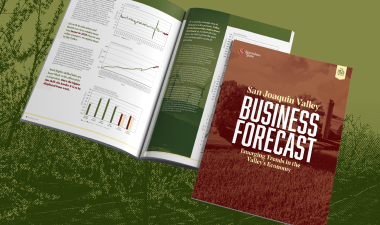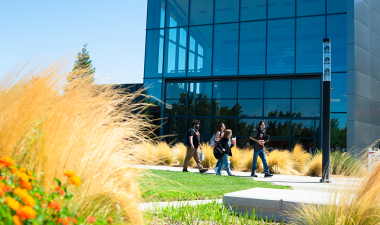As predicted, economic recovery began in the second half of 2020. However, the pace of recovery slowed in the latter part of the third quarter as a direct result of the rising number of COVID-19 infections. The spread of the virus continues to be the result of relaxed adherence to social distancing measures — particularly a reluctance in mask wearing. If an unwillingness to wear masks carries over and is an indication of a similar disdain for vaccines, the recovery process may even last longer, which in turn will place additional burden on an already-struggling economy.
This outlook is presented in the San Joaquin Valley Business Forecast produced by Gökçe Soydemir, the Foster Farms endowed professor of business economics at Stanislaus State. The entire update and past reports can be found on the San Joaquin Valley Business Forecast website.
Here are some of the report’s highlights:
EMPLOYMENT - While the projections in our last report accurately captured the recovery in sectors such as construction, other categories such as retail trade were over-forecast. Because we are mostly a farm-related economy that employs a relatively significant number of essential workers, employment declines in the San Joaquin Valley were slightly less than statewide declines in 2020. Naturally, no category of employment reported growth in 2020. The projections point to a more gradual recovery in the coming months, with the pace of recovery expected to accelerate in the second 12-month interval.
REAL ESTATE - The quick recovery in construction employment was reflected in Valley building permits in 2020. Building permits registered a 12.52 percent increase, following a very trivial increase of 1.52 percent in 2019. Surprisingly, home values kept increasing in 2020, primarily due to relief effort interventions of the Federal Reserve, a development in stark contrast to falling home values in the previous recession. Home values in the Valley grew at an average yearly rate of 4.61 percent in 2020, trailing the long-term benchmark growth of 5.05 percent.
PRICES AND INFLATION - In July, along with the start of the recovery, the yearly inflation rate began to rise very gradually, freeing itself from the deflationary pressures by posting an average annual rate of 1.89 percent. However, the yearly inflation rate in 2020 was still less than the typical rate of 2.31 percent. Purchasing power of the Valley consumer is likely to increase in the coming months as unemployment rates continue to fall and the inflation rate remains slightly below the increase in wages.
BANKING AND CAPITAL MARKETS - The impacts of the CARES Act and the Federal Reserve’s intervention was reflected in bank activity, as Valley total deposits grew 16.10 percent in 2020, roughly twice the long-term benchmark rate. Net loans and leases grew 13.51 percent, slightly less than twice the long-term benchmark rate. Valley community banks therefore extended fewer loans than they did in the past. Perhaps the most important indicator of this year’s report was that community bank assets in default 30-to-89 days and assets in default 90-plus days began trending sharply upward as banks kept a tab on unpaid loans. In the coming months, these two indicators will likely steepen further both regionally and nationally. This is a cause for significant concern for the Valley and for the national economy if the recovery lingers longer as a result of issues such as low vaccination rates.
ABOUT THE REPORT AND THE AUTHOR: Gökçe Soydemir’s biannual Business Forecast provides projections for the Valley's labor market, regional housing conditions, prices and inflation, banks and other depositary institutions and capital markets. Soydemir and his team use a unique forecasting model that produces lower and upper statistical confidence bands, with results that are expected to fall within this range. Soydemir joined Stanislaus State as the Foster Farms endowed professor of business economics in 2011. He brings strong expertise and experience in business analysis and forecasting and has published extensively on applied econometrics, regional economics, financial forecasting, market analysis and international finance.



